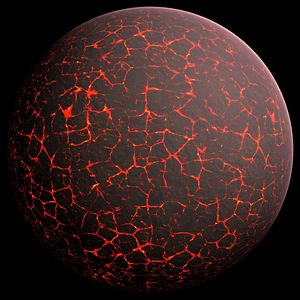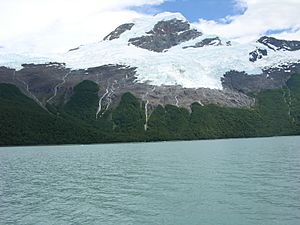Land facts for kids
Most of our planet, Earth, is covered by water. The part that isn't water, about 22 percent, is called land. Land can look very different from place to place. It might be covered in stones, sand, or dirt. Sometimes, it's hard to tell exactly where the land stops and a body of water begins, like at a beach! The word "land" can also mean a specific territory that belongs to a country.
Contents
How Land Formed on Earth

Our Earth formed about 4.5 billion years ago. It grew from tiny bits of dust and gas in space. These bits slowly came together, or "accreted," to make our planet. This happened at the same time the Sun and other planets were forming.
Early Earth's Atmosphere and Oceans
When Earth was very young, it was super hot and molten. Over time, it cooled down. Volcanoes erupted a lot, releasing water vapor and other gases. This created Earth's first atmosphere. The water vapor then cooled and fell as rain for millions of years. This formed our first oceans.
Some water and ice also came from asteroids and comets hitting Earth. Even though the Sun was not as bright back then, special "greenhouse gases" in the atmosphere kept the oceans from freezing. About 3.5 billion years ago, Earth's magnetic field formed. This field helps protect our atmosphere from strong winds from the Sun.
Forming the Earth's Crust
The solid land we walk on today is called the crust. It formed as the molten outer layer of Earth cooled down. Once the land could support life, many different kinds of living things began to grow. This "biodiversity" has grown over millions of years. Sometimes, big events called "mass extinctions" caused many species to disappear.
Moving Continents and Supercontinents
Scientists believe that the land on Earth has changed a lot over time. The continents we see today are always moving. This movement is called plate tectonics. It's like giant puzzle pieces on Earth's surface slowly sliding around. This process is powered by heat escaping from deep inside Earth.
Over hundreds of millions of years, the continents have come together and broken apart many times. These huge landmasses are called "supercontinents."
- About 750 million years ago, a supercontinent called Rodinia started to break apart.
- The pieces later joined to form Pannotia, between 600 and 540 million years ago.
- Finally, they formed Pangaea, which began to break apart about 180 million years ago.

Related pages
Images for kids
-
Map showing Earth's land areas, in shades of green and yellow
-
Land between bodies of water at Point Reyes National Seashore, California




